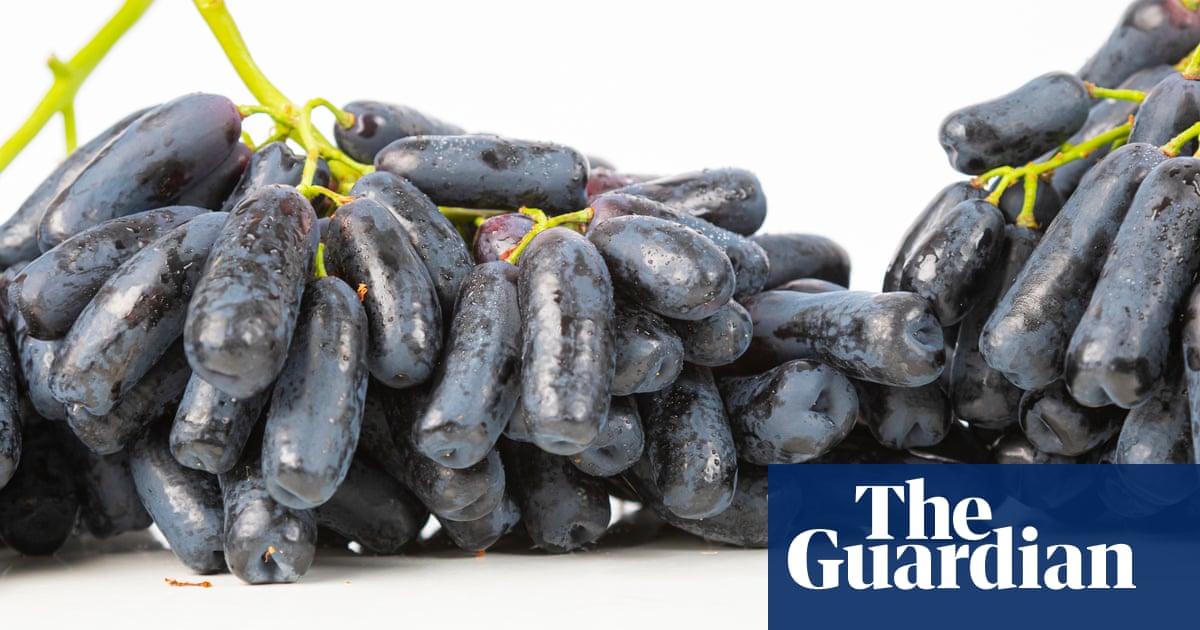When I first tried a Cotton Candy™ grape, I did a double take. Did someone swap out my fruit for fairy floss? The burst of sugary sweetness was so unexpected, it felt like I should have been picking at it from a stick, not plucking it from a bunch. This wasn’t nature playing tricks – it was the result of careful breeding.

A steady stream of new grape varieties are popping up in Australian supermarkets and green grocers. “More than 15 new varieties have been available in Melbourne markets this season alone,” says Thanh Truong, Fruit Nerd and author of Don’t Buy Fruit and Veg Without Me.
Crispy Dreams™, Coolgrape™ and Ruby Rush® may sound like strains from a California dispensary but these fanciful brand names represent a new approach to table grapes, driven by international breeding programs.
Quirky trademarked or registered names are all part of the plan, says Terryn Miller from the Australian Table Grape Association. “The breeders refer to the characteristics of the grape – so there are a lot of varieties with the words ‘crisp’, ‘crunchy’, ‘sweet’, ‘candy’, or ‘pop’,” she says. References to colour – “golden”, “sunrise”, “sapphire” – and seasonal timing are also popular.
While varieties such as Thompson Seedless have been staples for decades in Australia, in the past 20 years the industry has transformed. Truong says modern grape breeding prioritises different elements depending on the grape.
“[It] is not just about sweetness, nor is it just about flavour,” he says. “It’s about texture, intensity of flavours such as sweetness, sourness and aromas, and a balance of those flavours.”
Truong says the Sweet Globe™, for example, is crisp from skin to core. Whereas Cotton Candy™ grapes have been bred to maximise sweetness and aroma.
“New flavoured grapes have been designed to have characteristics that we love in fruits,” he says. “Compared to normal grapes, they are curated for a specific taste and, in my opinion, are a better eating experience almost every time.”
Just because these newer grapes are sweeter, it doesn’t necessarily mean they are less healthy. Sugar levels are only 10% to 20% higher, which Truong says is relatively minor, adding: “Everything should always be eaten in balance, even awesome fruits.”
So why are there suddenly so many new varieties right now? Nick Dry of Foundation Viticulture says table grapes aren’t just competing with each other; they’re battling apples, strawberries and every other fruit for a spot in the shopping basket. “Everybody is looking for an edge.”
Most of the newer varieties come from major international breeding companies, such as US-based SunWorld, which holds more than 200 table grape patents, and Bloom Fresh, which holds the licence for Cotton Candy™ grapes. These companies develop new cultivars through selective crossbreeding, Dry says. The “holy grail” of these programs, for breeders and growers, is having an early-season red and white, a medium-season red and white, and a late-season red and white, and ideally the late-season red and white you can cool-store long enough to then slide into the supermarket for as long as possible, he says.
Developing a new grape variety can take more than a decade and up to 15 years before it reaches supermarket shelves, factoring in time required for breeding, testing and quarantine procedures.
Miller says Australian growers have been adapting their practices to suit these new cultivars. “That might mean altering the canopy management, bunch manipulation, irrigation and/or nutritional programs.”
Dry says some newer varieties “are naturally sized and structured”, which means they require fewer inputs, such as growth hormones, “to get to an ideal size”. These changes can reduce costs for farmers.
While patented grapes reduce some costs, they increase others. It is “a big money business”, as Dry puts it. Only licensed growers can cultivate specific breeds, Truong says, and growers must pay a royalty fee to sell them – whether it’s a one-off fee per vine or a fee per kilogram sold. Breeding companies vigorously defend their trademarks, including pursuing legal action against unlicensed growers. Traditional varieties, in contrast, are free to grow.
This means premium grapes come at a premium price. At Coles, for instance, Cotton Candy™ grapes are $11 per kilo, while seedless white paper grapes are $5.70 per kilo. At Woolworths, Candy Hearts™ grapes are $17.50 per kilo versus $13.75 for the same weight of red seedless grapes.
Dry points out that the branding of these varieties plays a role in pricing. “You’re not just getting a red table grape – you’re getting Sweet Sapphire®.”
Although there are more than 100 grape varieties grown in Australia, the country isn’t developing its own new varieties. “It’s a very specialised field,” Truong says.
Nevertheless, “[breeders] have convinced growers in Australia that paying royalties for these new varieties is worth it, as growers can be better compensated because there is more demand for these far more, in my opinion, superior tasting grapes”, Truong says.
By his estimation, customers agree – “Who would want to eat one kilogram of bland grapes when you can have 100 grams of fantastic grapes?”
“Try it,” Truong says. “And, if you like it, you’ll see how much science, labour and growers’ tears have gone into growing new varieties.”










